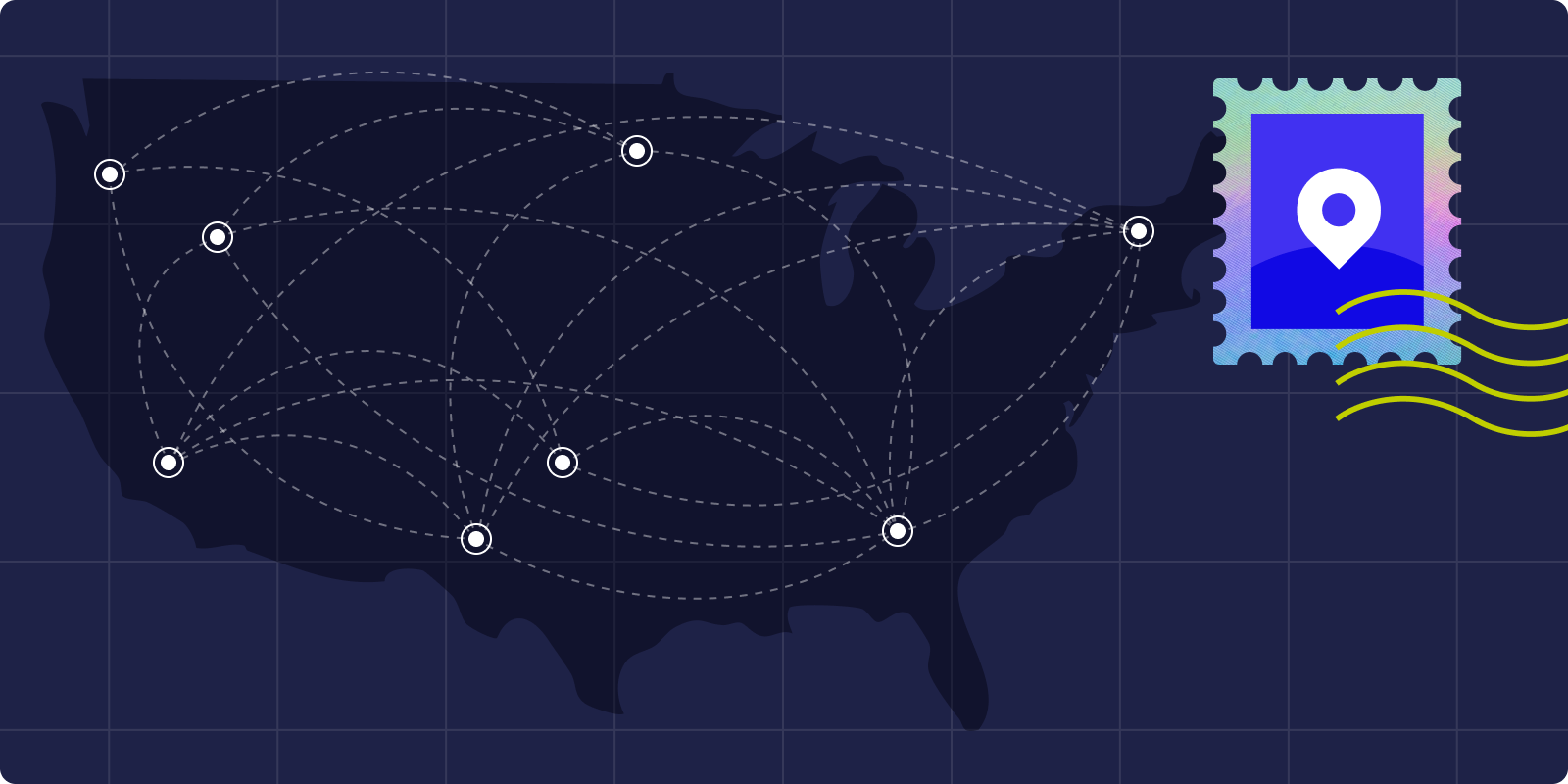


By
Lob
The USPS is in the middle of one of its biggest operational overhauls in decades. Under the Delivering for America plan, the Postal Service is redesigning its entire distribution network, from how mail is processed and transported to how postage will eventually be calculated.
One of the most significant changes on the horizon is zone-based pricing for Marketing Mail, a shift that will make distance a key factor in determining postage costs. While the Postal Regulatory Commission (PRC) recently declined to move the proposal forward, it’s expected to revisit the topic in early 2026, with potential implementation later in the year.
Even though details are still emerging, now is the time for marketers and mailers to understand what’s coming, and how it could impact the way they plan and execute direct mail.
Today, most Marketing Mail pricing is flat across the country: it costs the same to mail a postcard from Los Angeles to Los Angeles as it does from Los Angeles to New York. But that could soon change.
Under the proposed system, USPS would calculate postage based on how far mail travels from its point of entry to its destination, similar to how parcel shipping works today.
The Postal Service plans to align the pricing more closely to transportation costs by time of transit between the mailpiece’s entry facility to its final destination ZIP code. Mail entered closer to its delivery destination (Zone A) would cost less, while mail that must travel longer distances (Zones B–D) would cost more.
This approach is designed to more accurately reflect the real transportation and handling costs the USPS incurs as it moves mail through its network.
This shift is part of a broader reorganization of the USPS delivery network, moving away from its traditional structure toward a new system of Regional Processing and Distribution Centers (RPDCs), Local Processing Centers (LPCs), and Sorting & Delivery Centers (S&DCs).
In short: USPS is rebuilding its network around efficiency and proximity, consolidating processing centers, improving truck utilization, and streamlining delivery routes.
Marketing Mail, however, hasn’t historically been priced to reflect distance, which means that, in some cases, mail entered far from its destination has been traveling inefficiently through the network. Zone-based postage aims to fix that, encouraging mailers to enter mail closer to where it will be delivered.
While the exact rate tables and requirements haven’t yet been finalized, the implications are clear:
For companies that send mail nationwide, this is a fundamental shift. What has long been a predictable, flat-cost model will soon require more dynamic decision-making and potentially more localized logistics.
Zone-based postage represents one of the most significant shifts in direct mail logistics in years. While the Postal Service continues to refine the details, marketers who start planning now, by optimizing their print and mailing operations for proximity, will be best positioned to adapt when the changes take effect.
Here’s a few questions to ask when choosing your print partner:
These kinds of questions help brands understand whether their current or prospective partners are ready for a zone-based future.
To stay competitive in a zone-based postage world, businesses will need mail partners equipped for proximity and flexibility. A distributed print network — one capable of producing and entering mail from multiple regions — will be a decisive advantage. It not only reduces postage costs under the new system but also speeds up delivery and gives brands clearer visibility across every stage of the mailing process.
When it comes to navigating these changes, where and how your mail enters the USPS network could matter just as much as what’s inside the envelope.
FAQs
